Perhaps you could elaborate more on your specific needs in terms of how fast you would like the generation and how rapidly you might change the bounds of the square.
This problem is akin to generating the distinct numbers in a multiplication table (the cardinality of which studied Paul Erdos and the fastest known algorithm to calculate exactly is O(n^2)).
One way to consider generating sections of your list (assuming you will not be listing billions of coordinates) is to quickly hash a partial set of i*js in descending order and sort them. To make the hash accurate, we extend it below the chosen range [n,k] until after n * l is lower than k*k for some l. For example, for the range of coordinates from (10,10) to (7,7), we extend our hash to (5,5) so that (10,5), which is greater than (7,7), will be included.
JavaScript code:
function f(n,k){
var l = k, k2 = k*k;
while (n*l > k2){
l--;
}
console.log("low bound: " + l);
var h = {}, h2 = [];
for (var i=n; i>l; i--){
for (var j=i; j>l; j--){
var m = i*j;
if (h[m]) h[m] = h[m].concat([i,j]);
else {
h[m] = [i,j];
h2.push(m);
}
}
}
h2.sort(function(a,b){return b-a});
var i=0;
while(h2[i] >= k2){
console.log(h[h2[i++]]);
}
}
Output:
f(10,6)
low bound: 3
(10,10)
(10,9)
(9,9)
(10,8)
...
(10,4), (8,5)
(9,4), (6,6)
More output:
f(1000000,999995)
low bound: 999990
(1000000,1000000)
(1000000,999999)
(999999,999999)
(1000000,999998)
(999999,999998)
(1000000,999997)
(999998,999998)
(999999,999997)
(1000000,999996)
(999998,999997)
(999999,999996)
(1000000,999995)
(999997,999997)
(999998,999996)
(999999,999995)
(1000000,999994)
(999997,999996)
(999998,999995)
(999999,999994)
(1000000,999993)
(999996,999996)
(999997,999995)
(999998,999994)
(999999,999993)
(1000000,999992)
(999996,999995)
(999997,999994)
(999998,999993)
(999999,999992)
(1000000,999991)
(999995,999995)
